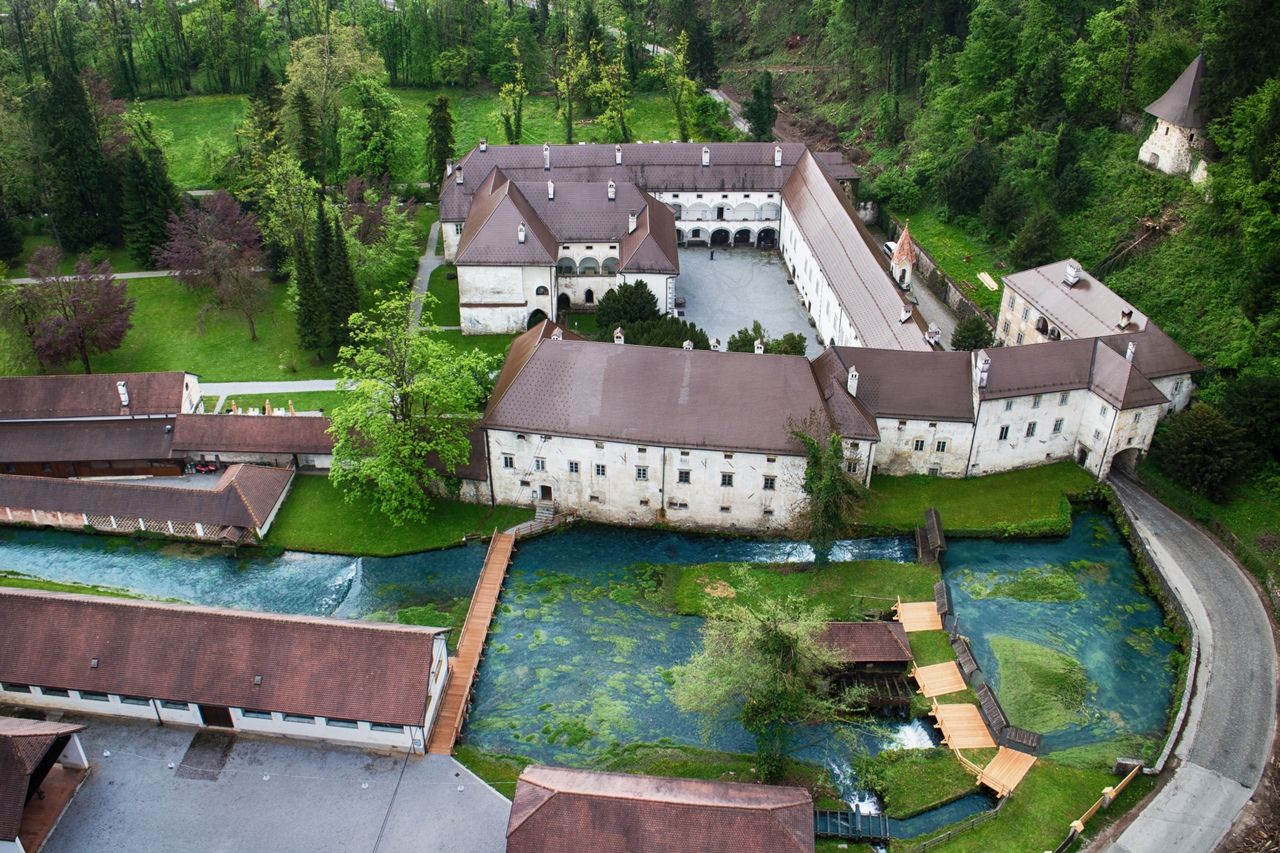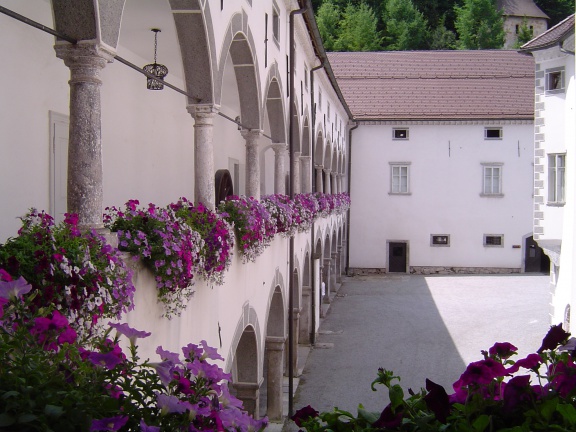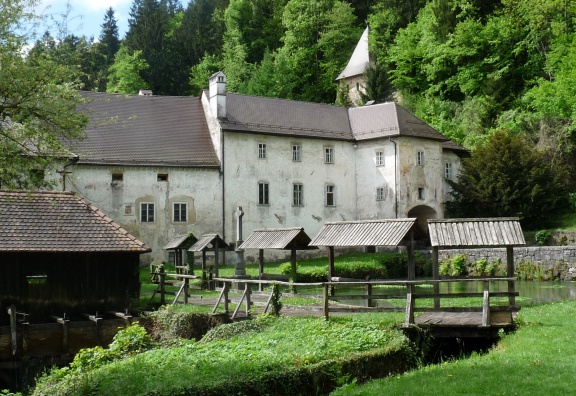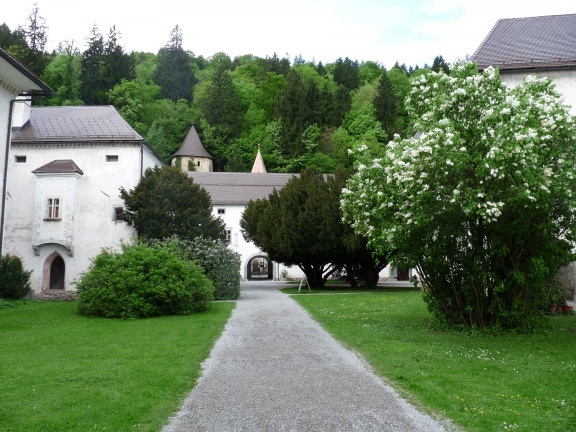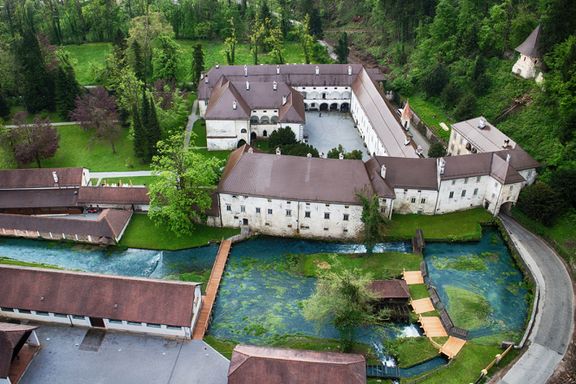Difference between revisions of "Bistra Carthusian Monastery"
Janez Premk (talk | contribs) |
|||
| (20 intermediate revisions by 8 users not shown) | |||
| Line 1: | Line 1: | ||
{{Article | {{Article | ||
| − | | status = | + | | status = PHOTO |
| maintainer = Janez Premk | | maintainer = Janez Premk | ||
}} | }} | ||
| Line 7: | Line 7: | ||
| name = Bistra Carthusian Monastery | | name = Bistra Carthusian Monastery | ||
|local name = Samostan Bistra | |local name = Samostan Bistra | ||
| − | | street | + | | street = Bistra 6 |
| − | | telephone = 386 (0) 1 750 6670 | + | | town = SI-1353 Borovnica |
| + | | telephone = 386 (0) 1 750 6670, 386 (0) 41 957 146 | ||
| fax = 386 (0) 1 750 6670 | | fax = 386 (0) 1 750 6670 | ||
| email = info@tms.si | | email = info@tms.si | ||
| website = http://www.tms.si | | website = http://www.tms.si | ||
| − | | | + | | managed by = Technical Museum of Slovenia |
| contacts = {{Contact | | contacts = {{Contact | ||
| − | | name = | + | | name = |
| − | | role = | + | | role = |
| − | | email = | + | | telephone = |
| + | | email = | ||
}} | }} | ||
| + | | opening hours = 8am-4pm Tue-Fri (10am-6pm in July-August), 9am-6pm Sat, 10am-6pm Sun and holidays, closed December-February and on 1st November | ||
}} | }} | ||
| − | {{Teaser| | + | {{Teaser| |
| − | The [[Bistra Carthusian Monastery]] was founded | + | |
| + | {{Wide image|An aerial photo of the museum 2014 Technical Museum of Slovenia.jpg}} | ||
| + | |||
| + | The [[Bistra Carthusian Monastery]] was founded around [[established::1220]] by Carinthian duke Bernard Spanheim and completed by his son Ulrik in 1260. In 1951 it was taken over by the [[Technical Museum of Slovenia]]. In 1999 the monastery and its surroundings were declared a cultural monument of national importance. | ||
}} | }} | ||
== Background == | == Background == | ||
| − | The monastery was subsequently supported by the counts of Celje and reached its peak in 14th century. However, further development was hindered by Turkish invasions, fires, earthquakes and the Protestant Reformation. The final blow to the institution was struck by enlightened absolutist Joseph II, who abolished the monastery in 1782. | + | The monastery was subsequently supported by the counts of Celje and reached its peak in the 14th century. However, further development was hindered by Turkish invasions, fires, earthquakes and the Protestant Reformation. The final blow to the institution was struck by enlightened absolutist Joseph II, who abolished the monastery in 1782. |
After the French occupation the building was used temporarily by the district authorities, but in 1826 it was purchased by merchant and factory owner Franc Galle who reconstructed it, removing the last remnants of the monastery and turning it into a castle. | After the French occupation the building was used temporarily by the district authorities, but in 1826 it was purchased by merchant and factory owner Franc Galle who reconstructed it, removing the last remnants of the monastery and turning it into a castle. | ||
| − | The estate comprising more than 1200 | + | The estate comprising more than 1200 hectares of land, four wood saws, a mill and a hunting hut remained in the possession of the Galle family until 1945 when it was declared a national possession under the management of the Ministry for Forestry. In 1947 some rooms were assigned to the cabinet collection of the Forestry Institute of Ljubljana. |
In 1951 the castle, park and the old Venetian sawmill as well as a small section of the forest were taken over by the [[Technical Museum of Slovenia]], which has continued to manage the site until the present day. | In 1951 the castle, park and the old Venetian sawmill as well as a small section of the forest were taken over by the [[Technical Museum of Slovenia]], which has continued to manage the site until the present day. | ||
| Line 37: | Line 43: | ||
== External links== | == External links== | ||
| − | *[http:// | + | * [http://www.tms.si/index.php?m_id=zgodovina-tms&lang=2 Bistra Monastery] on [[Technical Museum of Slovenia]] website |
| + | *[http://dedi.hruska.si/dediscina/93-bistra-bivsi-kartuzijanski-samostan Bistra Carthusian Monastery] on Dedi.si (in Slovenian) | ||
| + | * [http://redovi.rkc.si/?id=852&fmod=0 Pleterje Carthusians website] (in Slovenian) | ||
| + | {{Gallery}} | ||
[[Category:Museums]] | [[Category:Museums]] | ||
[[Category:Monuments and sites]] | [[Category:Monuments and sites]] | ||
| + | [[Category:Monasteries]] | ||
Latest revision as of 00:33, 22 May 2020
Background
The monastery was subsequently supported by the counts of Celje and reached its peak in the 14th century. However, further development was hindered by Turkish invasions, fires, earthquakes and the Protestant Reformation. The final blow to the institution was struck by enlightened absolutist Joseph II, who abolished the monastery in 1782.
After the French occupation the building was used temporarily by the district authorities, but in 1826 it was purchased by merchant and factory owner Franc Galle who reconstructed it, removing the last remnants of the monastery and turning it into a castle.
The estate comprising more than 1200 hectares of land, four wood saws, a mill and a hunting hut remained in the possession of the Galle family until 1945 when it was declared a national possession under the management of the Ministry for Forestry. In 1947 some rooms were assigned to the cabinet collection of the Forestry Institute of Ljubljana.
In 1951 the castle, park and the old Venetian sawmill as well as a small section of the forest were taken over by the Technical Museum of Slovenia, which has continued to manage the site until the present day.
See also
External links
- Bistra Monastery on Technical Museum of Slovenia website
- Bistra Carthusian Monastery on Dedi.si (in Slovenian)
- Pleterje Carthusians website (in Slovenian)



